Last Updated on September 12, 2024
I spend a lot of time in the kitchen experimenting with scraptastic recipes and filming the ones I love. In fact, my new cookbook 101 Tips For a Zero Waste Kitchen is available for purchase now!
I can’t tell you the amount of time I spent chopping food up on cutting boards. The average American spends approximately 400 hours a year in the kitchen, and I may have beat that stat.
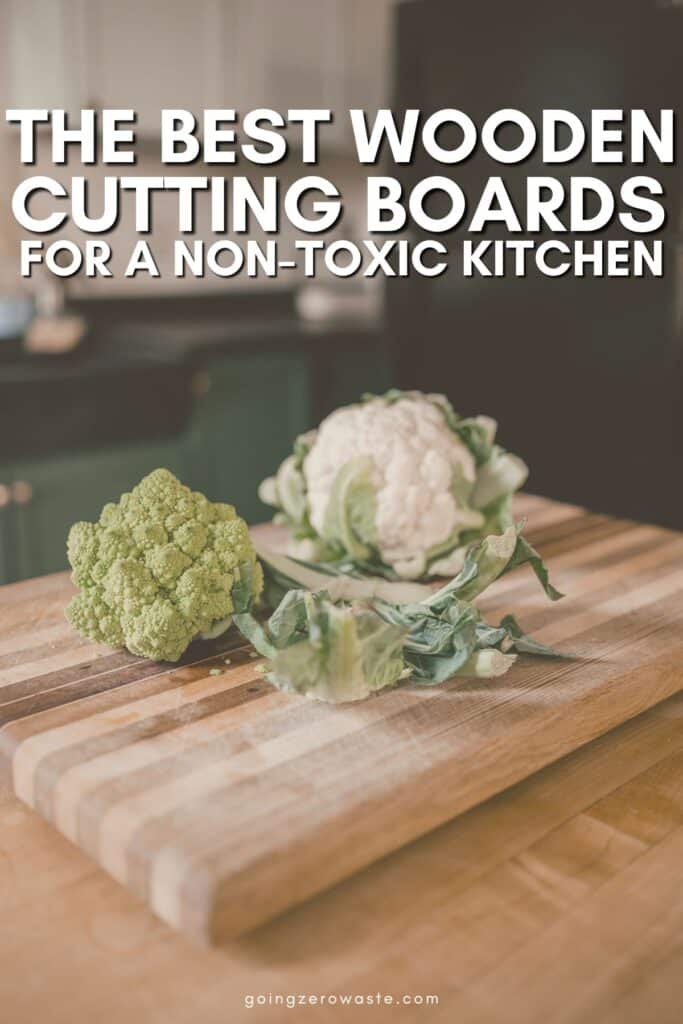
Some of the links in this post are affiliate links; for more information please see my disclosure policy.
But I speak from experience when I say not every cutting board is created equal. As someone who made over 90 scrappy recipes for a cookbook, I needed something that would not only hold up, but also not release microplastics every time I chopped into it.
If you own a chopping board made of plastic, or a wooden one with a plastic coating, you may be ingesting a notable amount of microplastics from your chopping board alone (more on that later).
That’s why I recommend switching to a wooden cutting board that’s made without plastic coatings or glues.
Getting a durable solid slab of wood is an investment that pays off for your health, and the planet. You just need to make sure the brand is sourcing the wood sustainably and that there aren’t any potentially questionable coatings, glues or finishings used.
Here are some of the best wooden cutting board brands on the market.
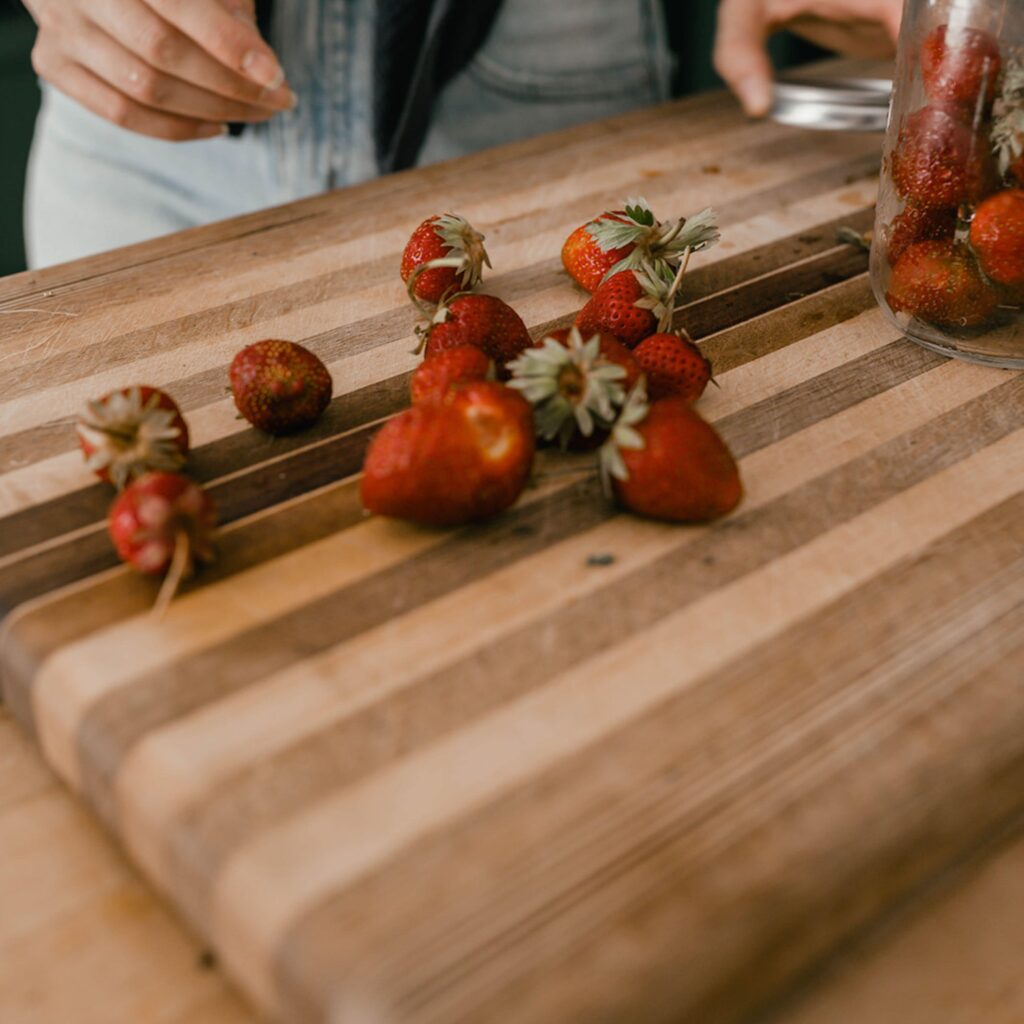
should you stop using plastic cutting boards?
If you have a plastic cutting board, you may want to consider switching to a wooden cutting board. Plastic chopping boards shed microplastics released during chopping on them.
According to a recent study, two kinds of plastic chopping boards (polyethylene and polypropylene) were studied for releasing microplastics into human food.
The study found a per-person annual exposure of 7.4–50.7 g of microplastics from a polyethylene chopping board and 49.5 g of microplastics from a polypropylene chopping board. In other words, both were releasing microplastics – though polypropylene was proven to release more.
These microplastics end up in our food, and eventually us. Microplastics have recently been found in human blood, feces, placentas, and even brains. While the health effects of microplastic consumption are still being researched, it can’t be good.
While it would be impossible to avoid microplastics entirely, reducing the amount we’re exposed to daily is a good place to start.
You can do this by switching to a wooden cutting board that doesn’t have any plastic resin or coating.
Here are some other ways to avoid microplastics:
- Choose natural fabrics whenever possible (such as cotton, hemp and linen) for clothing and bedsheets.
- Dust and vacuum frequently (microplastics can linger in dust, causing us to inadvertently breathe them in).
- Switch to plastic-free tea bags that are labeled compostable on the packaging (Yogi and Pukka are great examples). You can also support Arbor Teas, which has an assortment of loose-leaf tea in compostable packaging. Or get loose leaf tea package-free at your local bulk food store.
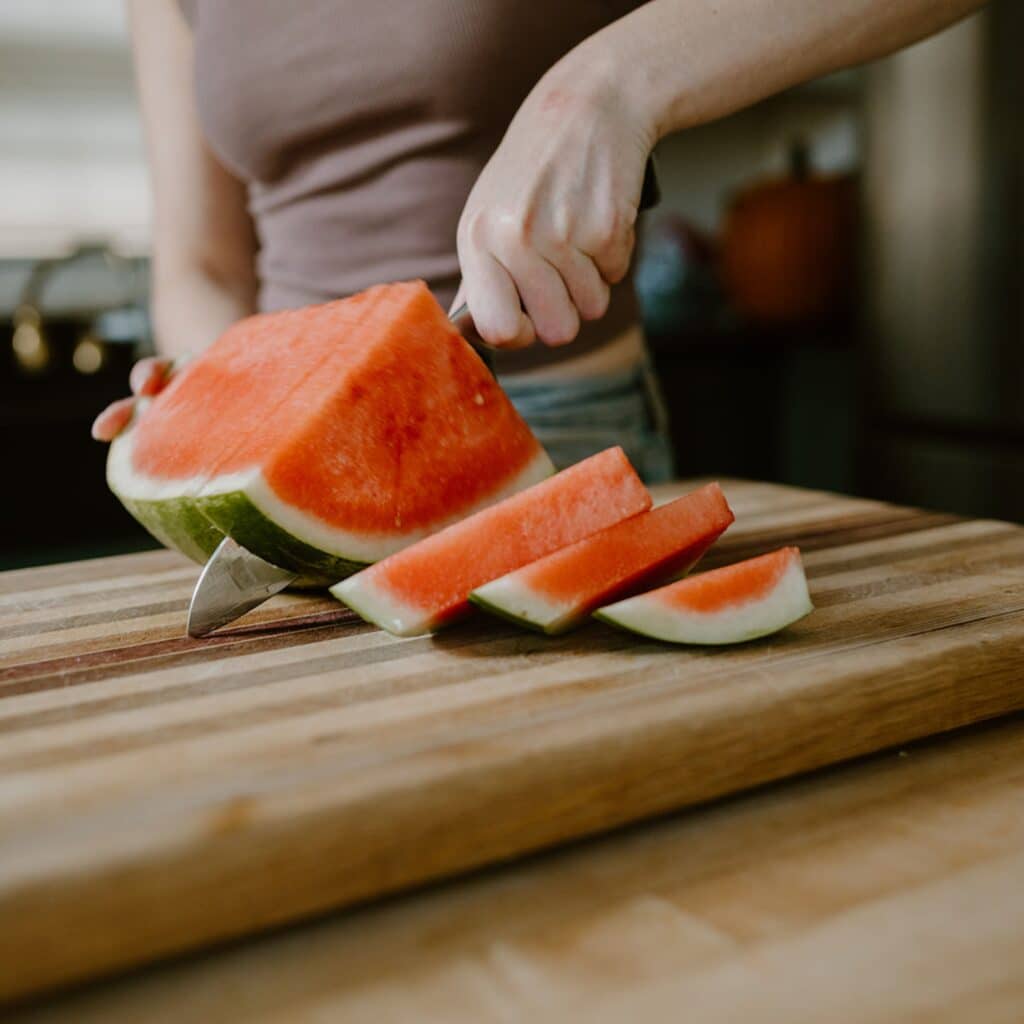
what to use instead of plastic cutting boards?
Instead of plastic cutting boards, you can use wooden, glass or stone cutting boards. Wooden is my personal preferred method.
However, be advised not all wooden cutting boards are created equal. Many wooden cutting boards have glues and resins on them.
Some wooden cutting boards are crafted from a single block of wood, but more often than not they contain pieces of wood that are glued together.
Cutting board materials fall under the FDA “food contact substances” and “indirect food additives” regulations since any part of a cutting board can touch your food.
The FDA considers food contact substances like glue resins/polymers food safe when they are completely cured (totally dried).
However, some approved substances like melamine-formaldehyde resins can release harmful gases and cause other issues for human and environmental health alike.
For this reason, it’s best to avoid wooden cutting boards formulated with any glue resins or polymers. You can do this by looking for solid slabs of wood: Many conventional wooden cutting boards are just various pieces of lumber glued together.
This said, it can be hard to find a wooden cutting board that’s glue-free. If you’re unsure, be sure to reach out to the brand and ask.
If you really cannot avoid glue in wooden cutting boards, for reference, Titebond III and Gorilla Wood Glue are both considered safer for food contact.
Also, be mindful that petroleum-derived wood preservatives like parafin wax and petroleum hydrocarbon resin are sometimes used as finishes. Looking for boards with beeswax coatings, or none at all, is preferable.
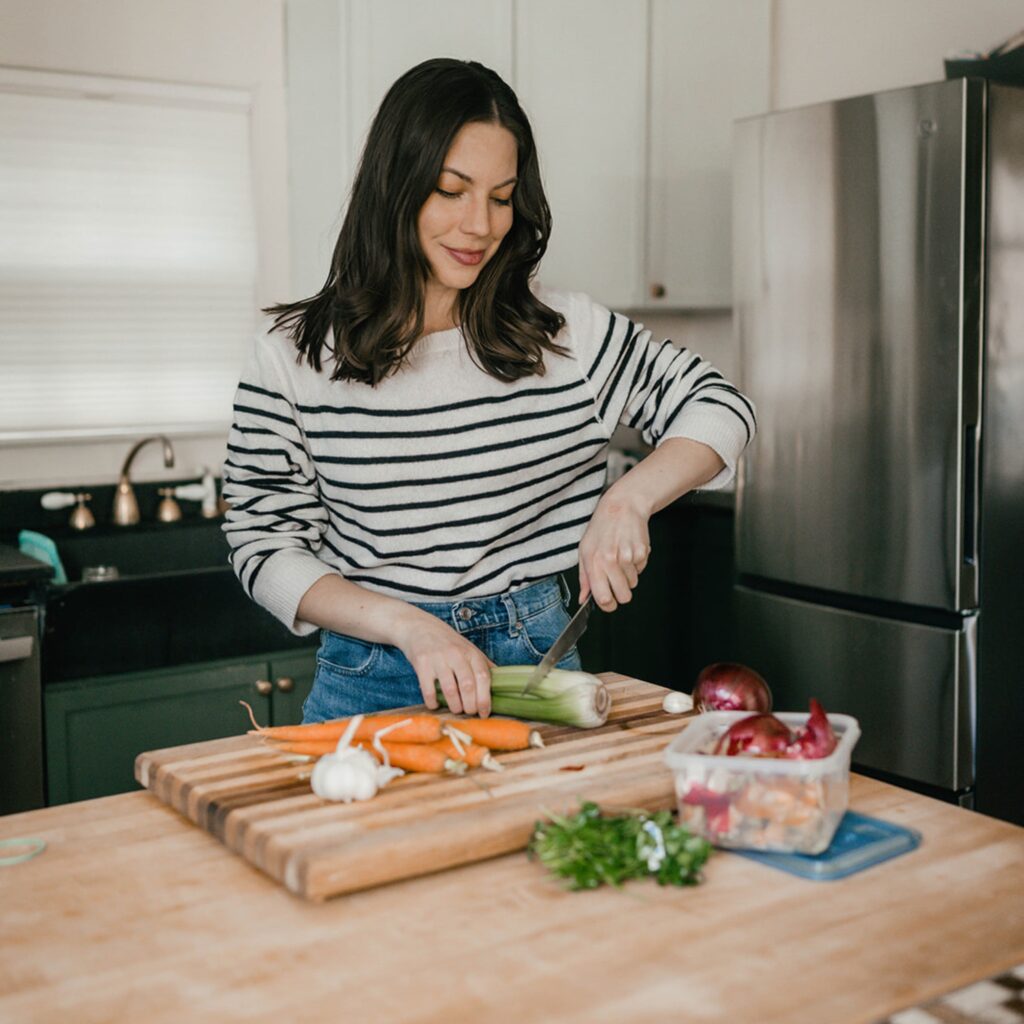
what is the best wood for a cutting board?
The best wood for a cutting board are hardwoods, such as maple, walnut and birch. This is because they are more durable and resistant to moisture absorption.
Ideally you should look for Forest Stewardship Council (FSC) certified wooden cutting boards, as this ensures the wood comes from a sustainably managed forest.
However, bamboo is another wood-like option: While technically not classified as a “wood” but a grass, it has similar properties to hardwoods.
Additionally, bamboo grows back quicker than hardwood trees, making it more renewable. For this reason, I’ve chosen to include some bamboo cutting board options alongside traditional wooden ones in this roundup.

how to care for a wooden cutting board
One downside to wooden cutting boards is they’re prone to warping and drying out. But this is all preventable! You just have to handle them with care and always hand wash them (avoid the dishwasher at all costs!).
It’s also a good idea to oil your boards regularly. This will ensure your wooden chopping board lasts for years to come.
to clean your wooden cutting board:
- Handwash using a wooden dish brush and mild dish soap (bar soap or liquid soap will do). Let it air dry completely before putting it away.
- For tough stains, sprinkle some baking soda and scrub away.
- If your board is smelly, use salt and a lemon to deodorize your board.
for oiling your wooden cutting board:
- If you notice your board becoming brittle and dry, it’s time to oil and wax it! This plant-based cutting board oil from Real Milk Paint is mineral-oil free and non-toxic. Just add a little to your board, then let the oil sit on the surface for a minimum of 10-15 minutes, or up to 24 hours at most. Buff the surface with a clean, lint-free cloth to remove excess and create sheen.
- If you’d like, you can follow it up with some Real Milk Paint wood wax as well. Using a clean rag, apply the wood wax, letting it remain on the surface for 10-15 minutes, then buff off the excess with another clean cloth. Be sure to wait 5 to 7 days before lightly using your cutting board. Keep in mind that Wood Wax by the Real Milk Paint Co. takes 15 to 30 days to fully cure, so plan your projects accordingly.
Oiling and waxing your board all depends on when the board starts to look thirsty (aka dried out).
Doing an oiling every month is ideal, but here’s one surefire way to tell if it needs it: If you sprinkle a few drops of water on the board with your fingertips, and it beads up, your board is sufficiently oiled. However, if the water disperses or soaks into the wood, your board needs more oil.
gzw approved wooden cutting boards
Here are some brands that sell wooden cutting boards and get the Going Zero Waste seal of approval. A lot of these brands utilize FSC certified wood, and many are handmade from one slab of wood (instead of various pieces glued together).
I’ve gone ahead and highlighted some key features of each brand, but it isn’t an exhaustive list. Be sure to check out their websites for more information.
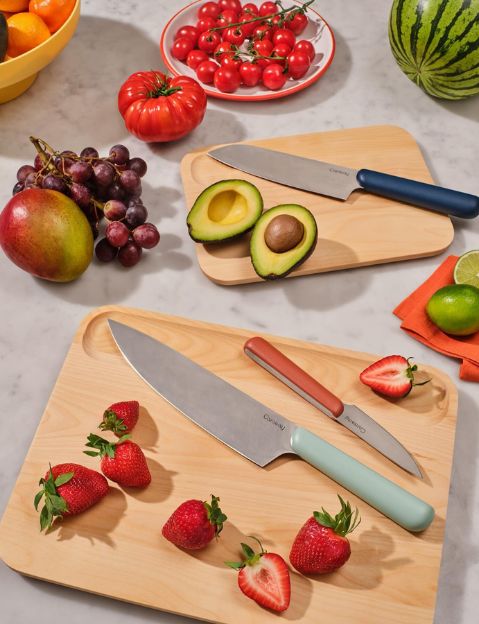
1. caraway
- Made from FSC-certified birch wood
- 4-piece board set (small, medium, large)
- Storage organizer included
- Mineral oil + wax finish
While I haven’t tried out Caraway’s cutting boards, I have tried out their cookware and bakeware. I can attest to their high-quality products, so I have no doubt their cutting boards are equally sound.
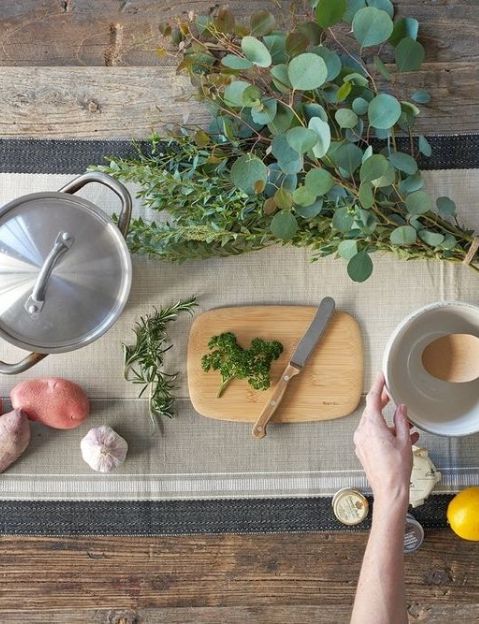
2. bambu
- Made from FSC-certified bamboo
- Medium + large size options
- Constructed using a water-based, food-grade adhesive imported from Europe that contains no formaldehyde
- Hand finished with food-safe wood oil
- USDA Certified Biobased
- No lacquer coating
- B corporation
I’ve tried their cutting board before and loved it! I have a small one. I’ve been using it for about a year now and it has held up really well. It’s surprisingly durable and still looks really great! I also have their wood and bamboo oil which does a great job upkeeping the board.
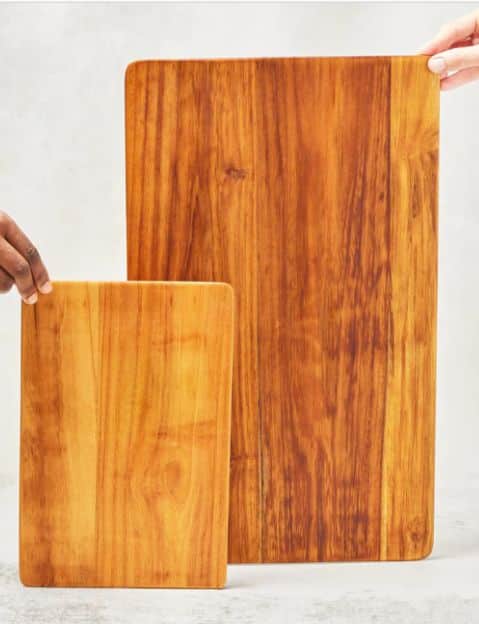
3. made trade
- Made from sustainably harvested Teak wood
- Small + large size options
- Handcrafted in Panama by the skilled artisans of Trasto
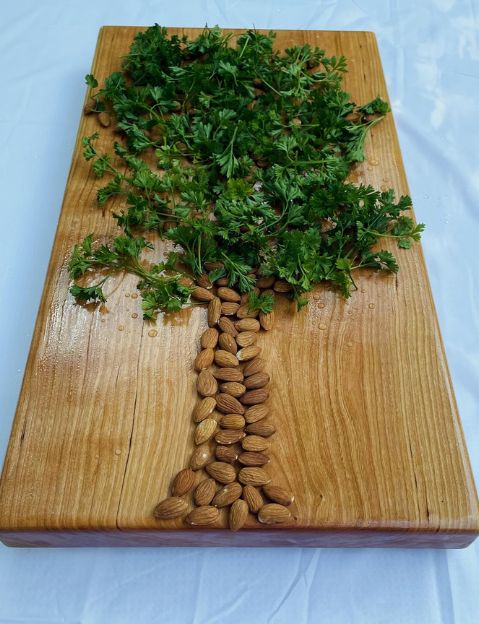
4. treeboard
- Sustainably sourced maple and oak wooden cutting boards
- Made without glue or petroleum products
- Cut from a solid block of wood in their Maryland workshop
- Hand finished with organic raw linseed oil and their own board balm.
- Each board comes with a complimentary tin of their own plant-based board balm
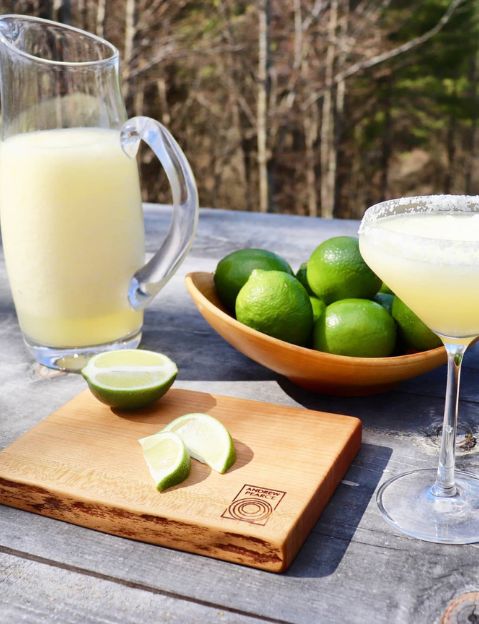
5. andrew pearce
- Made with responsibly sourced cherry or walnut wood
- Small, medium + large size options
- Live edge cutting boards made without any glues
- Finished with their food-safe, allergen-free Walnut Wood Oil
- Handmade in Vermont
What do you think of these wooden cutting board options? Let me know in the comments!



